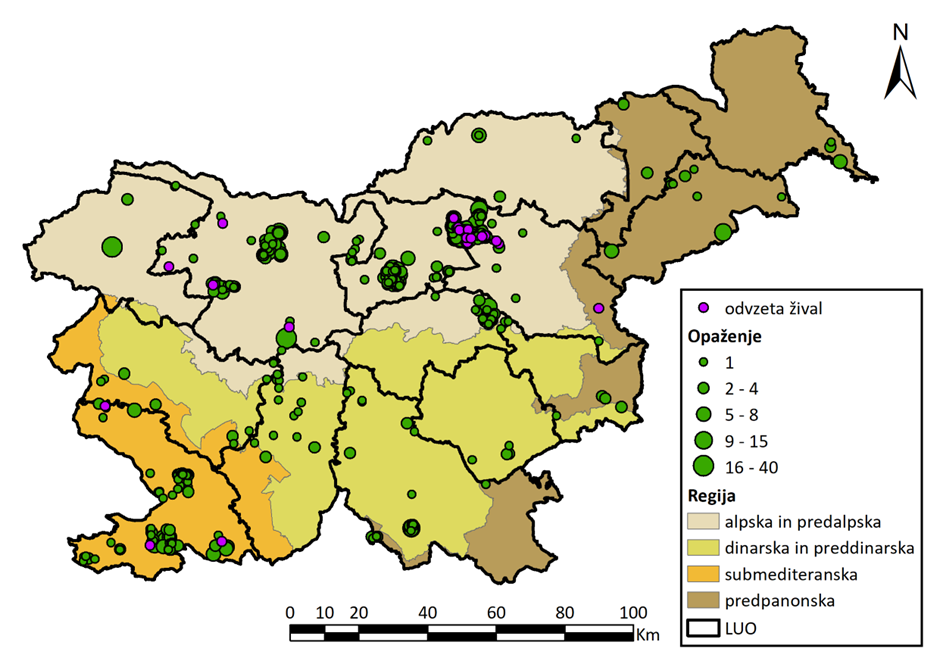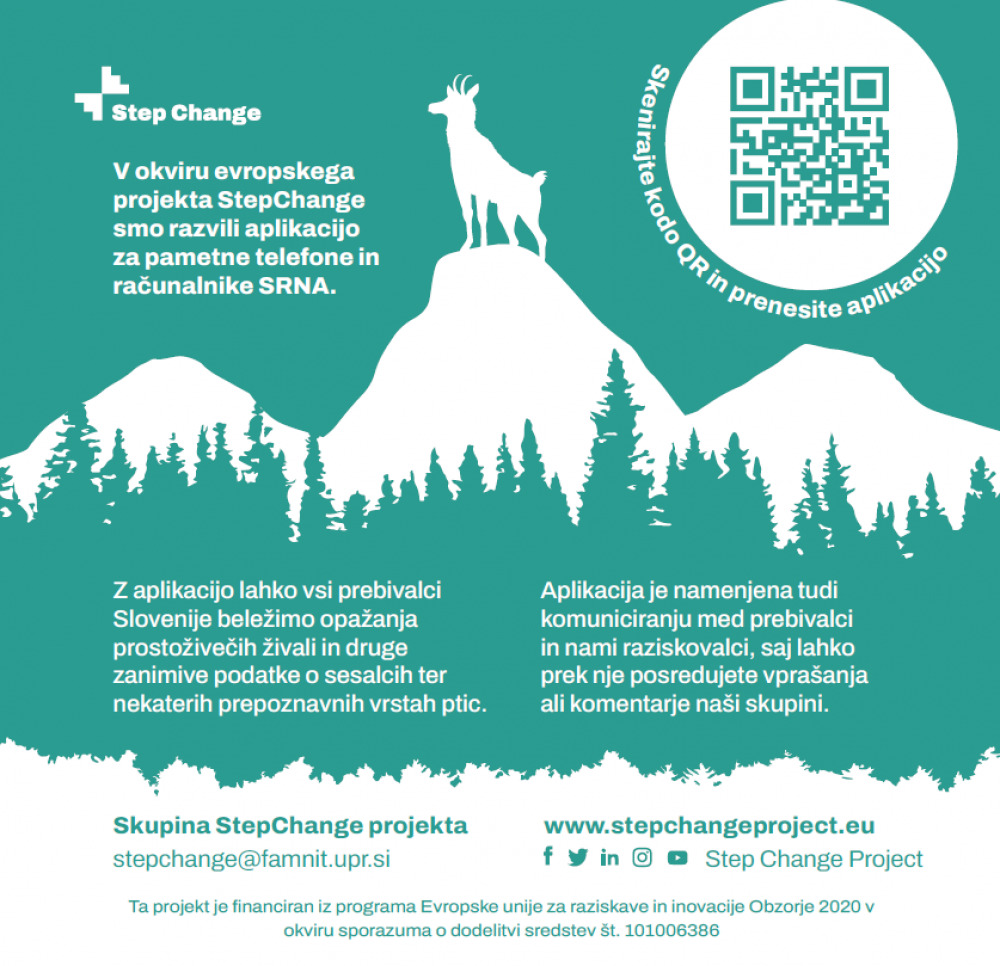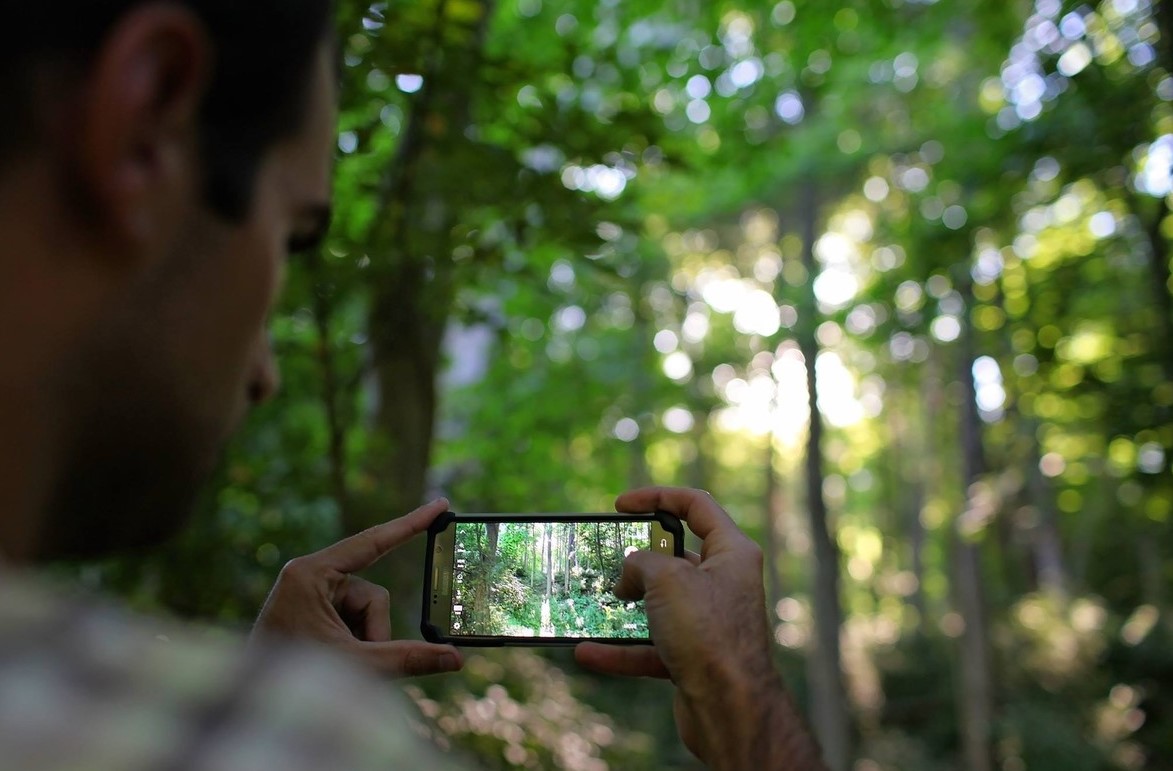Effective and sustainable management of wildlife populations requires regular monitoring of the status of populations. In order to facilitate and improve the systematic monitoring of selected species, experts from three research institutions (University of Primorska, University of Ljubljana and Faculty of Environmental Protection), in cooperation with the Hunting Association of Slovenia, have developed the SRNA (Monitoring and Researching Nature with an App) application.
In the Slovenian past, data have behttps://www.upr.si/en systematically collected mainly on harvested individuals of hunting species and on animals of some selected protected species, such as (large) carnivores. However, with the development of the SRNA application and the parallel promotion of citizen science within the international H2020 Step Change project, Slovenia has a database that also stores data on a number of other species in the mammal and bird groups.
Currently, the application records data on 31 selected species of wild mammals (ungulates, carnivores, rodents and rabbits) and on eight species of birds from the grouse and pheasant familiy.
In the first 18 months of the SRNA application’s operation, from 1 July 2022 to 31 December 2023, 2,325 sightings were entered, with more than half of these (1,319) contributed by hunters.
Of the 39 animal species that can be entered into the SRNA application, 28 species were observed and entered by hunters, including the more difficult to observe carnivore species such as wolf, Eurasian lynx, Eurasian otter, European polecat and least weasel, as well as landfowl species such as rock ptarmigan and western capercaillie. The most frequent wildlife sightings were of European roe deer, wild boar and red deer. This was followed by sightings of the northern (Alpine) chamois, field hare, red fox and Eurasian jackal.

| You can become an enthusiastic scientist too!
By recording sightings of rare or endangered species as well as common species, you will be making a significant contribution to improving our knowledge of their distribution and abundance, allowing researchers to better assess their densities and the overall status of the species. The knowledge gained will also contribute to improving the protection and management of species or to ensuring a harmonious balance of species’ existence. The SRNA app can be downloaded via QR code or web link. |


